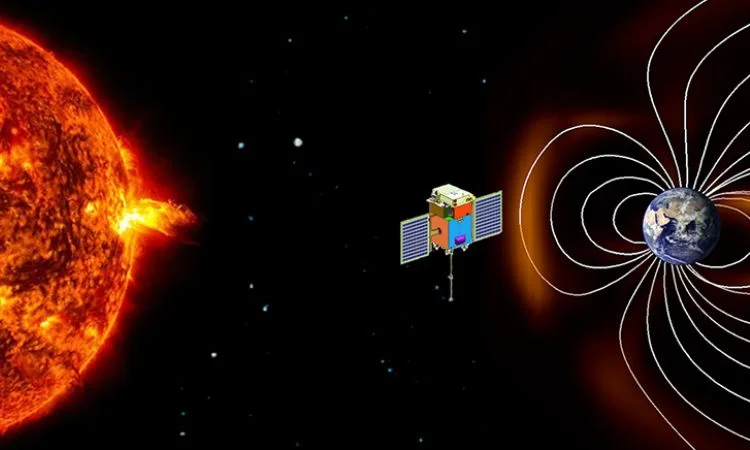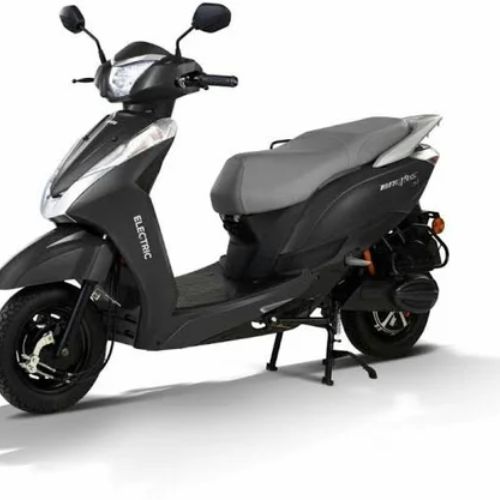The penultimate maneuver to place the Aditya-L1 spacecraft into its intended orbit was successfully conducted by the Indian Space Research Organization (ISRO), marking a significant milestone. India’s first space-based observatory devoted to Sun research is called Aditya-L1. At this point, the spaceship had traveled the last 1.5 million kilometers to reach its destination on Earth.

The first space-based Indian observatory to study the Sun, the Aditya-L1 spacecraft, was safely launched into its final destination orbit, approximately 1.5 million kilometers from Earth, on Saturday by the Indian Space Research Organization (ISRO).
“India establishes another historic moment. Aditya-L1, India’s first solar observatory, arrives at its location. It is evidence of the scientists’ unwavering commitment to completing some of the trickiest and most demanding space missions. I join the country in praising this incredible accomplishment. For the interest of humanity, we will keep exploring new scientific frontiers,” PM Modi stated in a post on X.
“Sun Dance to Moon Walk! What a fantastic start to the year for India! Under the visionary leadership of Prime Minister @narendramodi, Team #ISRO has written yet another success tale. #AdityaL1 completes its last orbit to unlock the secrets of the Sun-Earth link, according to MoS Science and Technology’s Jitendra Singh.
This is a pivotal point in Aditya L1’s journey. Thus, the most important maneuver—the Halo orbit incision—that would set Aditya L1 in its orbit has been carried out successfully. This signifies the start of the Aditya L1 mission’s orbit phase, as announced earlier today by Annapurni Subramaniam, Director of the Indian Institute of Astrophysics.
The Polar Satellite Launch Vehicle (PSLV-C57) was used to launch the Aditya-L1 satellite from the second launch pad at Sriharikota’s Satish Dhawan Space Centre on September 2, last year.
It was successfully injected into an elliptical orbit of 235×19500 kilometers around the Earth after a trip of 63 minutes and 20 seconds.
After leaving the Earth’s sphere of influence, the spacecraft made a number of maneuvers and proceeded toward Sun-Earth Lagrange Point 1 (L1).
The spacecraft is equipped with seven payloads that use electromagnetic, particle, and magnetic field detectors to study the photosphere, chromosphere, and the outermost layers of the sun, or the corona.
According to the Economic Times, “Using the special vantage point L1, four payloads directly view the Sun and the remaining three payloads carry out in-situ studies of particles and fields at the Lagrange point L1, thus providing important scientific studies of the propagator effect of solar dynamics in the interplanetary medium,” according to the space agency in a statement
According to officials, the Aditya L1 payload suites are anticipated to offer the “most crucial information” to comprehend the issues surrounding coronal mass ejection, pre-flare and flare activities, as well as their characteristics, space weather dynamics, and particle and field propagation.
The Aditya-L1 mission’s primary science goals are:
- Investigation of the dynamics of the solar upper atmosphere (corona and chromosphere).
- investigation of flares, physics of the partially ionized plasma, chromospheric and coronal heating, and the start of coronal mass ejections.
- Observe the plasma and particle environment in-situ, supplying information for the analysis of particle dynamics from the Sun.
- The solar corona’s heating mechanism and physics.
- Temperature, Velocity, and Density as Coronal and Coronal Loop Plasma Diagnostics.
- The formation, motion, and source of coronal mass ejections (CMEs).
- Determine which series of events at the chromosphere, base, and extended corona occur first and ultimately result in solar eruptions.
- Magnetic field topology and magnetic field measurements in the solar corona.
- Space weather drivers (solar wind dynamics, composition, and origin)















